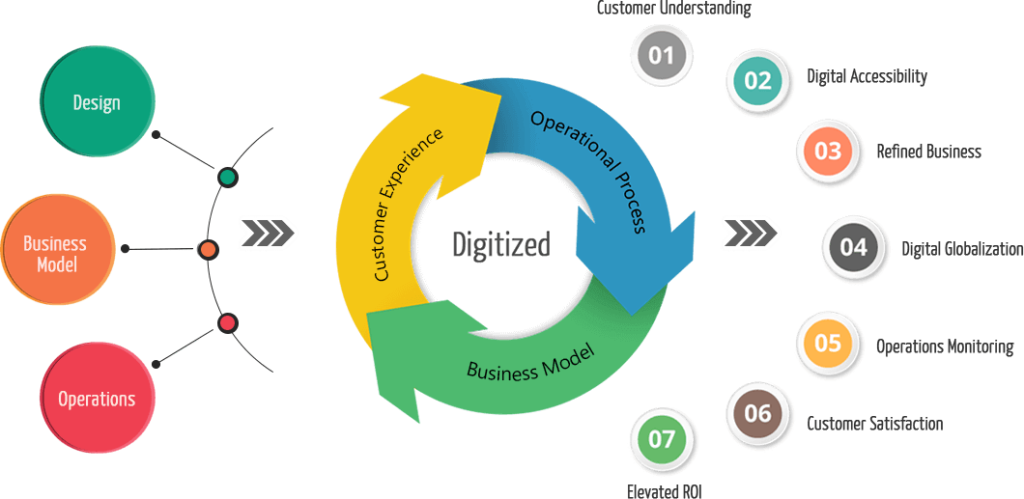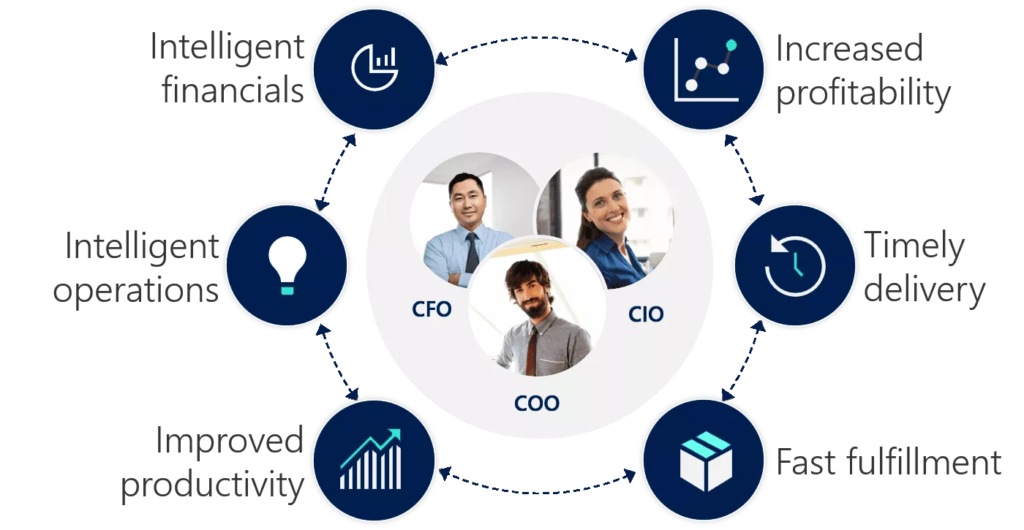To meet changing business and market requirements, digital transformation is the process of employing digital technology to build new — or adapt current — business processes, culture, and consumer experiences. Digital transformation is the redesigning of business in the digital age.
It goes beyond typical sales, marketing, and customer service functions. Digital transformation, on the other hand, starts and ends with how you think about and interact with customers. With digital technology on our side, we have the opportunity to rethink how we do business, how we engage our customers as we transition from paper to spreadsheets to smart applications for managing our businesses.
Why does digital transformation matter so much?
There’s no need to set up your business processes and then transform them afterwards for small enterprises that are just getting started. You can future-proof your company from the start. Stickies and handwritten ledgers aren’t going to cut it in the twenty-first century. You’ll be more nimble, versatile, and ready to develop if you think, plan, and build digitally.
Many businesses are taking a step back as they embark on digital transformation to assess if they are doing the right things.

What is included in a digital transformation project?
Digitalisation is not only the adoption of additional technological systems and services, as is generally assumed. Rather than fiddling with or improving conventional methods, a true digital transformation initiative includes radically rethinking company structures and processes.
For corporate executives, this creative necessity remains a difficult task. According to Cass Business School research, most organizations have little trouble producing new ideas, but many fail when it comes to adopting new business models or translating good ideas into organizational goals.
This disconnect between invention and execution explains why digitalization and disruption have usually been associated with small, fast-growing businesses. However, this does not have to be the case; there are many excellent examples of digital transformation in the company sector.
What does digital transformation look like?

A common example of digital transformation is the migration of outdated systems to cloud platforms. It becomes easier for organizations to upgrade and change applications in response to new user demands by shifting older systems to the cloud. In this scenario, DT is assisting in the support of agile and adaptable IT operations – in other words, it is enhancing the efficiency and effectiveness of a current process.
Another notable example of digital transformation is using technology to improve or eliminate an unproductive working practice. Consider the digitization of paper records, for example.
It is now possible to search digital records and run reports in ways that would have been unimaginable or at least difficult in the period of paper records if technology had not been used to revolutionize how an organization records its information.
While cloud-based platforms and services are frequently used in digital transformation, it can also include the adoption of emerging technology. Consider a retailer that allows clients to view its furnishings using virtual reality glasses from the comfort of their own home. In this scenario, digitalization converts the usual physical retail encounter into a virtual one, allowing customers to trial and then buy things from afar.
How important is digital transformation?
The power of digitization won over many naysayers during the coronavirus epidemic, for those who weren’t convinced of the beneficial effects of digital transformation.
When lockdown and social alienation first began, it was DT – and the IT departments that carried it out – that allowed businesses to continue operating as normally as possible in the most difficult of circumstances. CIOs and their IT teams have to develop technology solutions to meet their companies’ difficulties in a matter of hours.

Strategies for DT were accelerated at a rapid pace. Executive teams that might have been hesitant to invest in video conferencing and collaborative tools for years now have charged their IT departments with implementing remote-working strategies in days, if not hours.
CIOs and their teams stepped up and delivered — from facilitating remote work to providing online learning, to launching new online e-commerce channels and even developing entirely new business models:
- Leeds City Council was able to get its office personnel remote working in record time thanks to proven infrastructure, new laptops, and re-imaged older equipment.
- In just one week, the University of Sussex completed a five-year digital transformation strategy and had 22,000 individuals working remotely.
- The R&A, which organizes The Open, used cutting-edge video and analytics to construct a virtual event featuring golf’s all-time greats.
The rapid digital transformation pushed by CIOs and their teams, according to experts throughout the tech industry, has helped to shift the view of IT for the better. Technology is now recognized as a vital aspect for long-term corporate performance, rather than being viewed simply as a service to other activities such as sales and finance.
Criticisms of Digital Transformation
However, recent success does not imply that all skeptics have been converted. While most experts agree that digitization entails the use of technology to improve the efficiency or effectiveness of a business, nearly every project involving technology is labeled as a digital transformation initiative.
The term “digital transformation” has become a marketing buzzword for nearly any new technology deployment. In fact, the phrase is used so widely that it is on the verge of losing its meaning. Because of its pervasiveness, it’s no surprise when a media-hungry company labels the development of a new app, or even something as prosaic as a laptop renewal programme, as a “digital transformation endeavor.”
What else could be referred to as Digital Transformation?
Finding a new label for digital transformation would be one way to help silence the skeptics. We might find a more helpful moniker if we stop using the term blindly and instead focus on what we’re trying to do with technology.
That sentiment is shared by the CIO community: practically every IT executive will tell you that their company is focused on business transformation rather than technological change. Other industry experts advocate replacing the term “digital transformation” with something like “digital landscape,” “underlying digital environment,” or “data-led plumbing.”
All of these alternate names have the major flaw of meaning even less than the term itself.
Even if it’s just depending more on the cloud and pushing technology into sectors that were previously dominated by manual means, we now all have a perception of what DT entails, despite its flaws.
Yes, the concept of DT has shortcomings, but the IT sector should be glad that the business has begun to recognize the excellent work that the IT team is doing, regardless of what it is named.
Future of Digital Transformation
Business leaders have realized the advantages of digitization. Boardrooms have witnessed how technology may aid their organizations, from supporting new hybrid working methods to developing new routes to market, and they want more.




